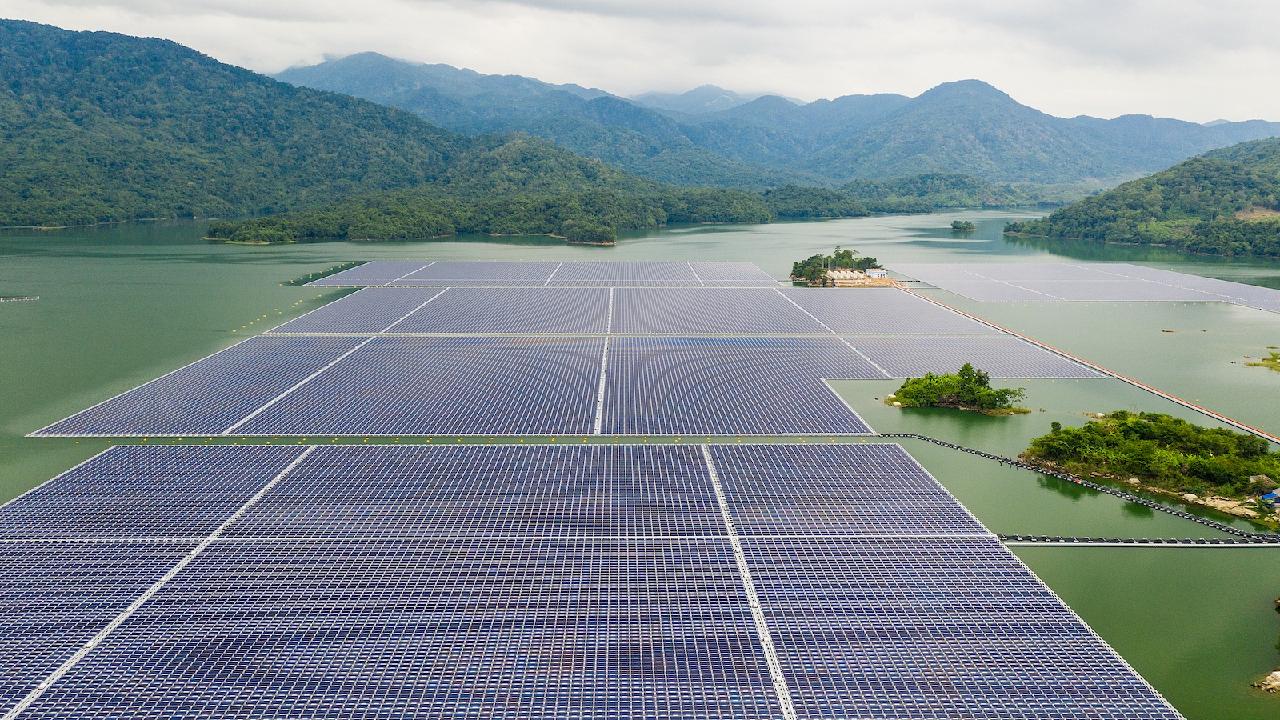They perished without air conditioning. Why the government funds heating but not cooling.
Federal agencies are urgently working to tackle climate change. However, the government largely fails to take action to stop the deaths of thousands from extreme heat.

According to an investigation by PMG’s E&E News, more than a dozen government agencies manage programs that either overlook or downplay the dangers posed by extreme heat, even as temperatures continue to break historic records nationwide.
This neglect stems from federal laws and regulations established decades ago during a time when heating costs were high, air conditioning was not common, and the implications of climate change were largely misunderstood.
The current policies treat extreme heat as a mere inconvenience rather than a leading cause of weather-related fatalities, denying many individuals access to federal assistance for cooling their homes and preventing homeowners from utilizing tax credits or government-backed mortgages to afford window air conditioners.
These policies contradict the Biden administration's significant investment in grants, regulations, and tax incentives intended to curb climate pollution and enhance the country’s resilience to climate change effects. The administration has pushed extensively for heat safety, proposed new workplace heat protection mandates, and allocated hundreds of billions towards green energy, emissions reductions, and improving energy efficiency.
“We do not currently have the climate that most of our buildings, our laws, policies, formulas and grants were designed around,” said Grace Wickerson, health equity policy manager for the Federation of American Scientists.
The White House did not respond to requests for comments.
Low-income individuals from Florida to Arizona struggle with unaffordable energy costs, often turning off their air conditioning, living in poorly insulated homes, or completely forgoing cooling equipment because of existing federal policies.
While the nation’s disaster response mechanisms have allocated hundreds of billions to shield people from storms and other weather-related threats, extreme heat is not classified as a disaster.
“Natural hazards, including hurricanes, earthquakes, tornadoes, droughts, wildfires, winter storms, and floods, present a significant and varied risk across the country,” states the government’s National Preparedness Goal, conveniently neglecting the weather threat responsible for over 2,300 deaths in the previous year.
This negligence continues as unprecedented temperatures sweep across the U.S., leading to 201,000 extreme heat incidents between 2019 and 2023—a dramatic fourfold rise from 30 years prior.
“I just don’t think people really grasp how catastrophic the exposure is going to be even within a decade,” said Justin Schott, project manager at the University of Michigan’s Energy Equity Project. “Now, people being hot seems like just a source of discomfort.”
E&E News examined thousands of pages of laws, regulations, reports, and spending documents, revealing concerning trends:
— Since the 1970s, Congress has penalized warmer states in the allocation of $142 billion intended for residential energy bills and home weatherization programs. For instance, Arizona, Florida, and Hawaii have averaged just $131 per person from these funds, while states like Maine, North Dakota, and Vermont have received $982 per person.
— FEMA’s guidelines omit heat mitigation from a list of 16 project types states can fund with $27 billion allocated since 1989 for climate protection. While FEMA has provided billions for homeowners to safeguard against flooding, tornadoes, hurricanes, and earthquakes, it rejected a $10 million application from New York City for air conditioning upgrades, deeming it “ineligible.”
— Homeowners purchasing energy-efficient window air conditioners are ineligible for federal tax credits or rebates available for central air conditioning, despite the Biden administration expanding these credits. Mortgages designed for energy efficiency cannot be utilized for window units.
— The use of limited and possibly misleading weather data to assess counties' vulnerability to extreme heat has raised concerns. The Census Bureau’s Community Resilience Estimates for Heat relies solely on heat records from 2022, which led to counties like Multnomah in Oregon and King in Washington, where heat waves caused fatalities, being reported as having no heat exposure.
Also noteworthy, FEMA’s National Risk Index utilizes National Weather Service heat warnings from 2005-2022. This resulted in Miami-Dade County, Florida, receiving "no rating" for heat risk despite NASA reporting that “Every summer up to 600 people die in Miami-Dade County, FL, from extreme heat exposure.”
— The Department of Housing and Urban Development (HUD) does not cover air conditioning bills for the nation’s 1.6 million public-housing residents, despite covering heating, water, and electricity costs unrelated to cooling. As Richard Monocchio, HUD principal deputy assistant secretary for public housing, described, residents often avoid turning on air conditioning due to fear of unaffordable utility costs.
“There’s a racism that’s built into all of the policymaking and implementation of things like public housing,” said Lisa Sitkin, supervising attorney at the National Housing Law Project, which advocates for low-income tenants and homeowners.
Monocchio pointed out that the administration has made “historic actions to protect vulnerable families” from climate impacts, including recent HUD “guidance” encouraging local authorities to fund air conditioning.
Federal heat-safety campaigns highlight strategies like wearing light clothing and avoiding sun exposure, but the reality remains stark: Most heat-related fatalities occur indoors.
National Weather Service data dating back to 1996 shows that, among known heat death locations, 62 percent of individuals died indoors, while only 29 percent died outside.
“The most important housing characteristic affecting heat vulnerability is the absence of working air conditioning,” noted the Centers for Disease Control and Prevention in a 2020 report.
As the Department of Energy acknowledges on its website, air conditioning, once viewed as a luxury, is now an essential service, and the EPA recommends replacing units older than ten years.
However, the federal program aimed at assisting low-income households with energy costs has invested merely 7 percent of its resources on air conditioning needs since its inception in 1981, while 71 percent has gone toward heating assistance.
Rep. Ruben Gallego, a prominent advocate for improved federal policies regarding extreme heat, expressed concern, stating, “Everything we’ve done has been focused on cold weather for quite a while. Funding is all based on that kind of mentality.”
Records indicate that, among the 72 individuals who perished in Portland during a heat wave in June 2021, only 10—about 15 percent—had air conditioning, highlighting the risk faced by those without cooling systems, in contrast to the 79 percent of households in the area equipped with air conditioning.
“Access to air conditioning is a life-saving intervention during extreme heat,” the Multnomah County investigation concluded. “Lack of air conditioning was a key driver in mortality.”
Despite high rates of air conditioning access, officials in Maricopa County, Arizona, reported that many individuals died from heat-related causes due to factors such as broken or turned-off air conditioning units.
Maricopa, home to 4.6 million residents, has recorded 819 indoor heat-related deaths since 2011, with the majority occurring when air conditioning was either malfunctioning or off.
“A lot of us are really annoyed because heat deaths are preventable,” said Melissa Guardaro, an extreme heat researcher at Arizona State University. “There are laws everywhere about home heating. We need to do the same thing for heat and hot weather and cooling.”
Arizona stands as a prime example of the federal government’s inaction regarding extreme heat.
The state has experienced more heat-related fatalities than any other since 2018. In fact, Arizona's indoor heat deaths surpass the combined count of the next four deadliest states—Texas, Nevada, Washington, and California—even though those states have a combined population that is over ten times larger, federal records reveal.
Yet Arizona has received the least funding per person from the federal Low Income Home Energy Assistance Program (LIHEAP), receiving just $91 per person since 2001. In comparison, Vermont has received $921 per resident.
This trend is evident across the Southern U.S., where states with extreme heat often serve only a fraction of eligible individuals.
Since 2011, LIHEAP assistance reached 34 percent of eligible recipients in Michigan, Vermont, and Wisconsin combined but only 4 percent in Arizona, Florida, and Texas.
“It has a very anachronistic point of view on heat,” Gallego stated regarding federal policies. “It’s not just something happening in Arizona. There will be more extreme heat deaths happening in Oregon and Washington state. But they’re stuck in some old ways of thinking.”
In October 2022, California Governor Gavin Newsom attempted to secure disaster aid for the state following a heat dome, linking it to wildfires. Historically, no governor had successfully received disaster aid for heat, since the focus is typically on repairing damaged property rather than preventing fatalities.
While FEMA had initially agreed to cover part of California’s fire management costs, Newsom sought additional funding, arguing that the heat dome led to devastating wildfires.
Despite Newsom’s efforts, Biden denied the request, emphasizing that FEMA does not categorize extreme heat as a disaster due to a lack of property damage.
“People-centered disasters that cause harm to humans and not to property — we don’t have good systems for measuring those,” explained climate expert Alistair Hayden.
The 1974 Stafford Act specifies that a disaster must cause "damage of sufficient severity." FEMA’s interpretation primarily emphasizes property damage rather than the human toll associated with heat-induced illnesses and deaths.
“One of the biggest obstacles they have is to think differently beyond property damage,” said Jean Su, a senior attorney at the Center for Biological Diversity, emphasizing a need for policy evolution.
A coalition of environmental and public health organizations has urged FEMA to categorize heat waves and wildfire smoke as eligible for disaster assistance, recognizing the increasing challenges posed by climate-driven events.
Such a presidential disaster declaration would facilitate a considerable influx of resources from several federal agencies geared towards rebuilding and recovery but currently, the reluctance remains.
“There’s a fear of opening that door and realizing how much need there is going to be,” stated Wickerson from the Federation of American Scientists.
While federal disaster policy sidesteps the human impact of extreme heat, animal welfare seems to receive more attention. Since 1994, the Department of Commerce has allocated $250 million for disasters affecting fisheries caused by marine heat waves, and the USDA has identified heat-related livestock and crop disasters.
In July 2023, extreme heat contributed to an estimated 1,130 deaths in the U.S.—the highest recorded in a single month—prompting Biden to pledge the creation of a “national heat strategy.” This initiative, finalized in August 2024, seeks to clarify government responsibilities in combatting extreme heat but an answer regarding whether past decades of confusion will be resolved remains uncertain.
“There’s a lack of a coherent governmentwide policy,” remarked Mark Wolfe, executive director of the National Energy Assistance Directors’ Association. The Congressional Research Service added, “No federal agency claims responsibility for managing emergency preparedness and response to extreme heat.”
For over forty years, federal officials and legislators have attempted unsuccessfully to enhance government responsiveness to heat dangers. Lawmakers from warmer states have lobbied since the early 1980s to reform the LIHEAP funding allocation, which prioritizes heating costs over cooling needs.
“You’ve still got a lot of parochial interests,” Gallego noted, referring to political dynamics hampering progress on this issue.
While a new funding formula was established in 1984 that considered warmer climates, subsequent conditions limited its effectiveness. As a result, funding continues to favor cold-weather states.
“The political support for the program is still coming from the cold weather states,” noted Wolfe.
Changes relating to federal policy on extreme heat often hinge on agency-initiated actions that can take years to implement. For instance, HUD requires lengthy rulemaking processes to finance air conditioning for public housing residents.
In addition, the Census Bureau cannot add inquiries related to air conditioning without a formal agency request.
“Even a request for air conditioning data should be made by the Administration for Children and Families, the agency responsible for running LIHEAP,” argued Larsen, with the potential for significantly improved arguments for addressing extreme heat if the request were made.
Biden’s proposed standards to protect workers from extreme heat remain uncertain, with finalization only expected in 2026—leaving room for policy revision should a shift in presidential leadership occur.
Despite securing increased funding for LIHEAP following the pandemic, Biden has proposed a modest $4.1 billion for fiscal 2025, representing the smallest request in recent years.
“It doesn’t help that the budgets for LIHEAP don’t increase as fast as other budgets,” Gallego lamented, emphasizing a pervasive political will to maintain the existing status quo.
Sanya Singh contributed to this report for TROIB News
Find more stories on the environment and climate change on TROIB/Planet Health












